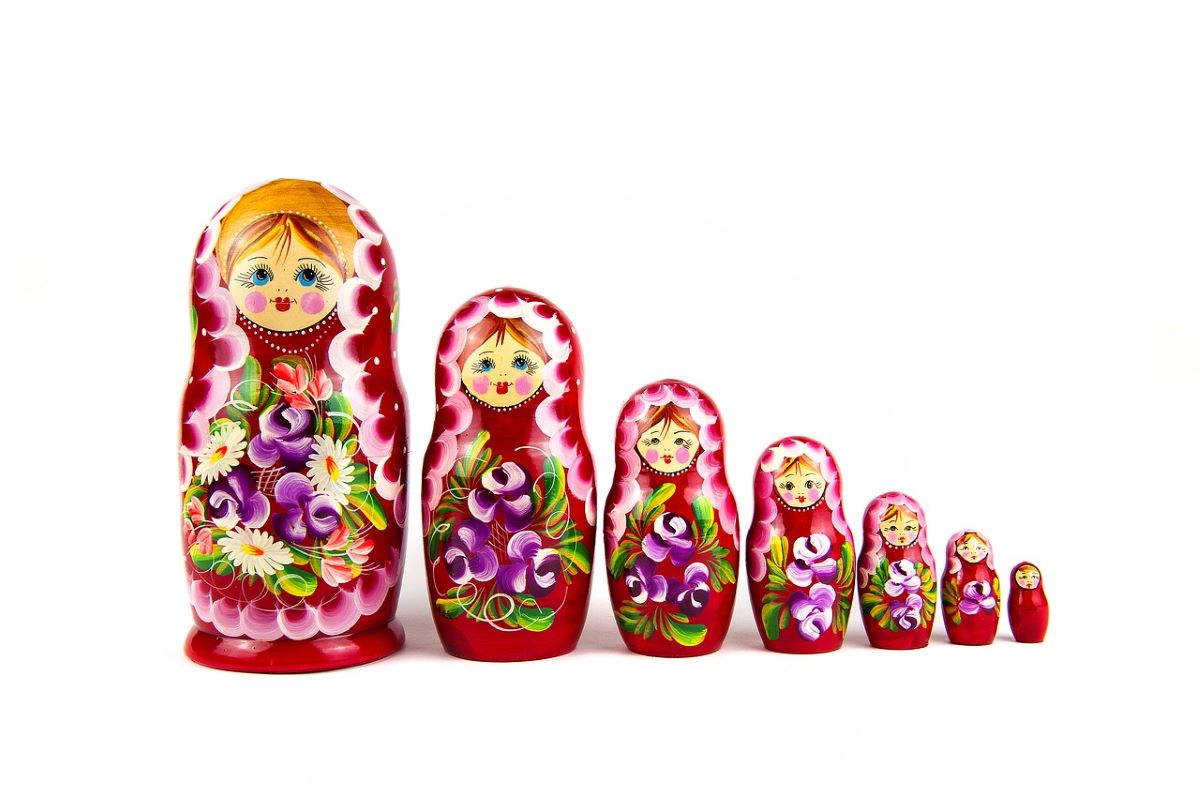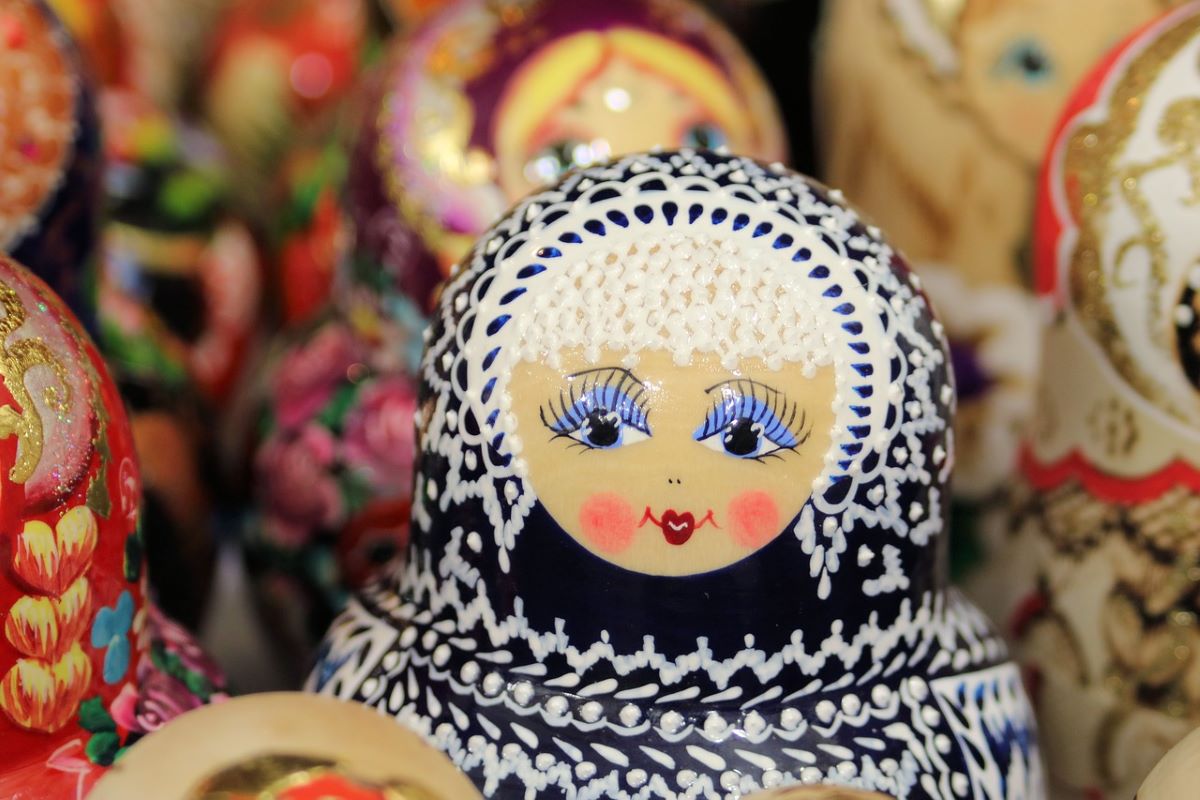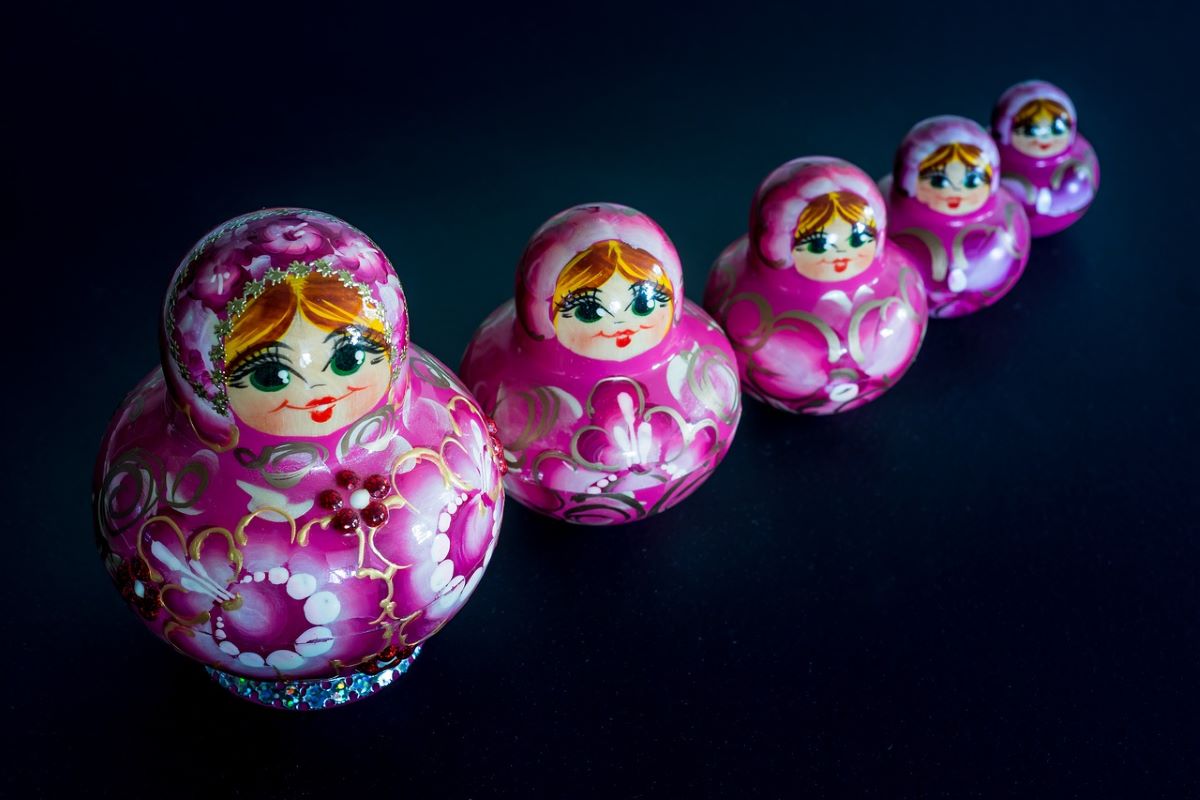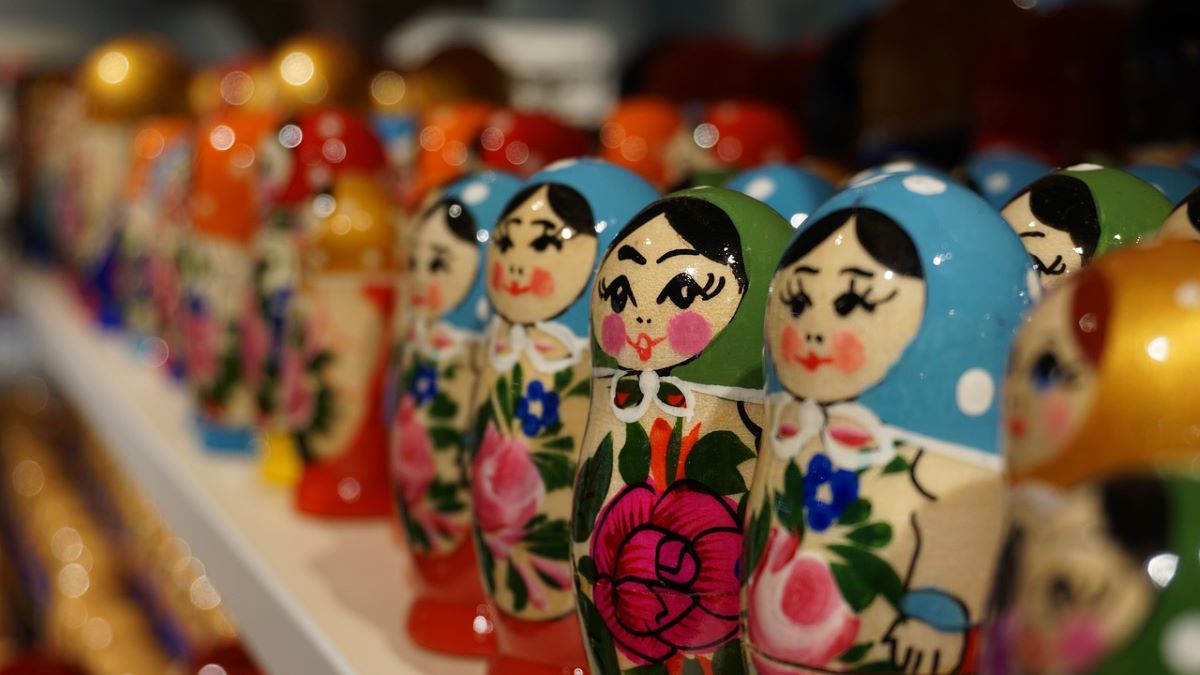
Image | Pixabay
If we asked ourselves what is the most typical souvenir that we can take home after a trip in Russia, surely most of us would answer without hesitation that the best memory is a matrioshka.
It is one of the most popular toys in the world, which you will easily identify even if you have never visited Russia before. In fact, their fame is such that the matrioshkas have even become a decorative and fashion symbol. What's more, you may even have a matrioshka at home and you don't remember where you got it.
The matrioshkas have a curious origin and also a great meaning for Russians when they receive them as gifts. If you have always wondered what the history of this toy is, where its name comes from and what it represents, you cannot miss this article where I will address all these questions.
What are the matrioshkas?
They are wooden dolls that keep multiple replicas of themselves in different sizes.. Depending on the size of the mother matrioshka, inside we can find between a minimum of five and a maximum of twenty matrioshkas, each one smaller than the previous one. Amazing!
What do the matrioshkas represent?
The matrioshkas represent Russian peasant women and are a cultural icon of the country.
How are matrioshkas made?
To make matrioshkas, the most used woods are those that come from alder, balsa or birch, although probably the most used wood is linden.
The trees are felled in April, which is when they are most full of sap, and the logs are aerated for at least two years, smearing the ends of the same with sap to prevent the wood from cracking.
When they are ready, the carpenters cut the appropriate lengths and send them to the workshop to work the wood in 15 stages. The first matrioshka that is made is always the smallest.

Image | Pixabay
Where does the name matrioshka come from?
The name of this toy comes from «Matriona», one of the most popular in ancient Russia, which in turn comes from the Latin «mater» which means mother. Later the word "Matriona" was adapted to matrioshka to designate this doll. Other terms that are also used to refer to matrioshkas are names like mamushka and babushka.
What is the symbology of the matrioshkas?
Russian matrioshkas symbolize fertility, motherhood and eternal life. That is to say, a large and united family where the mother gives birth to a daughter, this to her granddaughter, she to her great-granddaughter and so on until representing the infinite world.
At first, only female dolls were carved, but later male figures were also recreated in order to complete the family and in turn represent other values such as brotherhood between brothers. With the passage of time, they also began to make Russian matrioshkas that represented historical or literary figures.

Image | Pixabay
What is the history of the matrioshkas?
It is said that at the end of the XNUMXth century the Russian dealer and patron Savva Mamontov made a trip to Japan where he visited an artistic exhibition in which he learned what would be the antecedent of the matrioshkas. It was a representation of seven divinities that were one inside the other being Fukurokuju (the god of happiness and wisdom) the eldest and the one that contained the rest of the deities.
Mamontov kept the idea and on returning to Russia he presented it to the painter and turner Sergei Maliutin to make his own version of the Japanese piece. In this way, a doll was created that represented a happy Russian peasant who welcomed all her offspring.
The toy caused a sensation at the 1900 Paris World's Fair, where it went on to win a bronze medal, and factories soon sprung up in Russia producing matrioshkas for sale across the country and in the West. In this way it has become an icon of Russian culture and the most representative souvenir of the country. Each craftsman carves his own dolls and they have become toys of great value because they are sometimes collector's items.

Image | Pixabay
The Moscow Matryoshka Museum
In fact, they are so important that in 2001 it was opened in Moscow, the Matryoshka museum to publicize the history of these toys and their evolution over time.
This museum displays some of the first original Russian matrioshkas that were created in the early XNUMXth century and how their design changed over the years.
For example, in the 1920s the Bolshevik matrioshkas represented the working class and even the figure of the "kulak" (a term that was used pejoratively to refer to rich peasants) was also reproduced wearing a cap and with arms crossed over a huge belly.
During the time of the USSR, the government wanted to embody Soviet internationalism in the matrioshkas and different nationalities such as Belarusian, Ukrainian, Russian, etc. were represented on these dolls. Even with the space race, a large collection of astronaut dolls was also generated with their own diving suit and space rocket.
After the end of the USSR, the theme of the matrioshkas diversified and famous politicians and various international celebrities began to be represented.
Taking a tour of the collection it is interesting to compare the most traditional matrioshkas with the most modern ones. as well as with the Japanese figures of the dio Fukuruma that inspired them. The museum also shows the differences between the matryoshka from different regions of Russia and provides information on the life and careers of leading Russian matryoshka craftsmen and painters.

Image | Pixabay
Give a matrioshka
For Russians it has a great meaning to give a matryoshka as a gift. When someone receives one of these dolls as a gift, they have to open the first matrioshka and make a wish. Once it has been fulfilled, you can then open the second doll and make another new wish. So on until the last and smallest matryoshka is reached.
Once all the matrioshkas have been opened, whoever received this gift must present it to a descendant as a symbol that they are flying from the nest. At first this was done by women. Only they were in charge of the homes and could make wishes to finally deliver the matrioshkas to their children.
That is why if someone gives you a matrioshka, It is said in Russian culture that he is giving you his love and affection in the form of a toy.
If, on the other hand, you are the one who is going to give a matryoshka as a gift, in addition to delivering this detail, the best thing you can do is tell the recipient the meaning and history of the gift now that you know it. In this way, he will value the gift much more and will know what to do with the latest and smallest matryoshka.